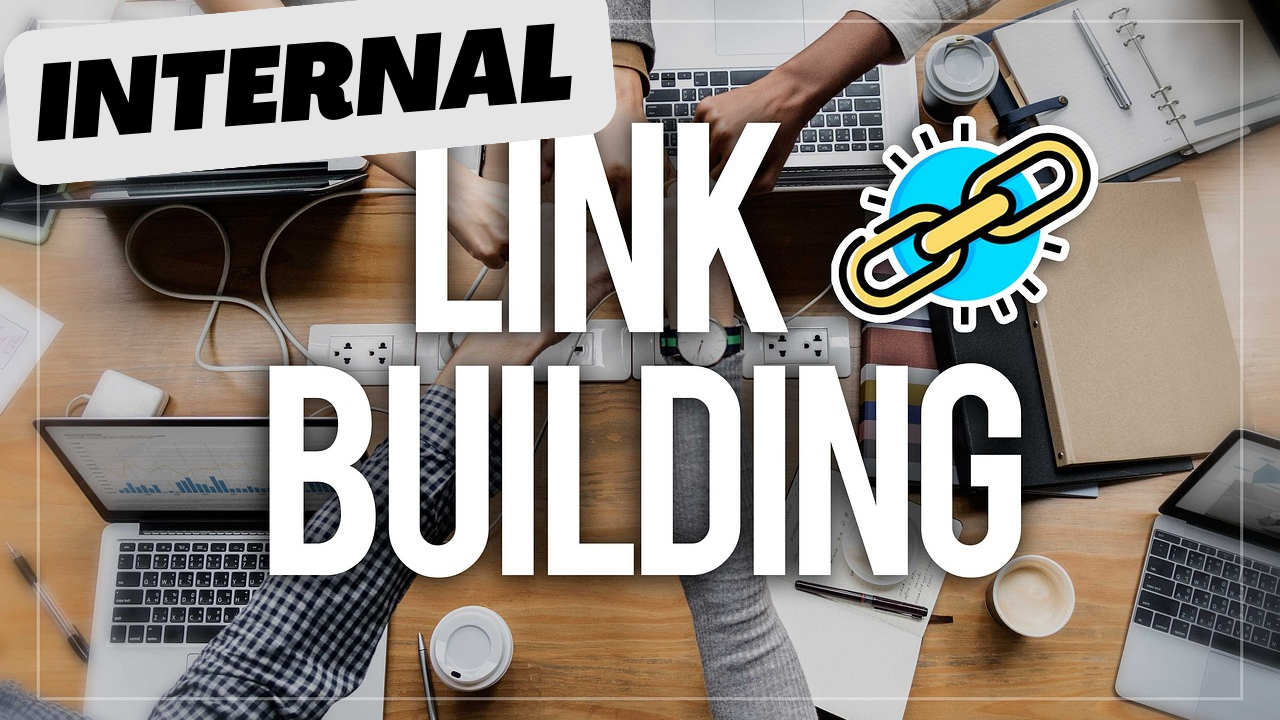
Even if you’re new to SEO, you’ve probably heard of the importance of linking and netlicking in an SEO strategy. Just as you have been required throughout your studies to cite your sources in your editorial work, it is necessary to include links in your articles.
By adding a link, you increase the credibility of your content, you provide evidence and you subscribe to scientific logic.
Most marketers focus on adding external links. Indeed, they consider that backlinks are an important factor in evaluating the quality of a page… And they are quite right on this point.
However, there is another vital factor that is often overlooked. These are internal links.
Internal links are essential to the success of an on-page SEO strategy. Very little subject to change, they are a safe bet.
We are going to study the advantages of optimizing internal linking. But, before that, let’s see together the basics of this technique.
Internal linking: definition?
By definition, internal linking generally refers to the organization of internal links on your website. These are the links located on your site which refer to another page in your domain.
The internal link is therefore a page with a hyperlink which leads to another page in the same domain, for example this link pointing to our Shopify SEO service.
Note, however, that it is better to avoid overusing it. Three or four links will be enough. Favor parsimony and use them only when justified!
As you can see, most of the links appearing in this post are to other pages in the same domain.
Internal linking allows Google and other search engines to easily understand what other pages are about.
The benefits of internal linking
The creation of an internal network is an important element of “on-site” natural referencing.
First of all, the website owner has total control over the set of internal links and this is one of the advantages of this technique. Which is not the case for netlinking.
In addition to its advantages in terms of SEO, internal networking also has many qualities in terms of user experience. Your job as an SEO or SEO consultant is to create a user-friendly structure and use internal links to guide users and search engines to the most important pages on the site.
You must therefore worry about two things when you design the internal linking of your site:
- Internet users: Allow Internet users to navigate the site simply and efficiently.
- Search engines: Search engines take internal links into account.
Mastering the internal networking will allow you to optimize your entire site. It will allow you to achieve your SEO objectives.
Allow Internet users to easily navigate the website
The site owner has full control over internal links. Therefore, it can design the path of its visitors and make navigation a pleasant experience.
It is with a very personal intention and needs that Internet users go to a site. Some are looking for information, others are looking for a description of your products or services, and still others want to communicate with you.
These intentions and needs can be addressed through a well-thought-out internal network. Try to direct the user to a specific page, or at least a relevant page, so they can get more information. Failing at this step will negatively impact your SEO.
As you already know, search engines like Google appreciate websites that provide a quality user experience.
The navigation of your site as well as the user experience have a direct influence on your SEO.
There are three types of metrics to monitor:
- Time per page: If users find your content worth reading because it gets them answers, then they will stay on your site longer. A high time on page improves a website’s SEO.
- Pageviews: Directing visitors to a page on your site that is more relevant increases the number of pageviews for your domain. A high number of page views benefits your website’s SEO.
- Bounce rate: As you probably know, a high bounce rate is not beneficial to a site’s SEO. Although we do not entirely control the type of visitors who choose to click on our website, we are responsible for what they see and read.
So make sure your internal mesh contributes to a better browsing experience.
Encourage visitors to stay on the site
The more time your visitors spend on your site, the more familiar they become with your content. Remember that in the attention economy, the idea is to attract a highly targeted audience through content AND capture and retain their attention.
Internal links encourage people to stay on your site and reduce your bounce rate. You should always strive to reduce your bounce rate. The bounce rate measures the percentage of Internet users who leave your site after visiting only one page.
The inability to offer Internet users different content options that might interest them contributes greatly to the bounce rate. Retaining visitors for longer can have a significant effect on site SEO.
Ideally, people visit your web page, stay there, and read other content. So don’t hesitate to entertain, educate and inform your visitors as much as possible. Avoid directing your visitors to poor content.
What content is the user directed to?
Think about the purchase path of your target/visitor. If you do an article on an iphoneX versus Galaxy S9 comparison, the Internet user is ready to read a detailed sheet on the iphoneX or the Galaxy S9, or even the act of purchase!
Keep in mind that the purpose of internal linking is to provide information about your site and user intent. For this to bring real benefits, it is important to provide links to relevant and useful information. You will then succeed in retaining your visitors.
Set up the tree structure of the website
Internal linking is the foundation of a website. Site architecture or tree structure refers to how you organize your site to provide a quality user experience.
The strength of a building lies in its foundations and the same logic applies to websites. Well-thought-out internal linking provides a solid foundation for a website’s on-page SEO.
The tree or structure of a website takes the form of a pyramid structure organized in a hierarchical manner. The home page constitutes an internal link directing the Internet user to a second level (subpages). The latter is connected to a third level and so on (in the case where the visitor arrives via the home page).
Keep in mind that the architecture of the site must be designed with the user experience in mind.
In other words, internal links must be created to respond and satisfy user intent. This is how you will create the best possible architecture for your website.
Share the juice
Each link has a transmittable value. This is the famous link juice or “link juice” in natural referencing.
The latter includes several elements including the value of the page, its reliability, the relevance of its subject and its authority. A good internal network makes it possible to direct this juice well, because it is transmissible.
Links convey the qualities of the page to other pages. This has an impact on SEO.
Imagine that one of your pages is well referenced on Google. This means that this page has significant link juice. You can share this juice with the other pages you want to optimize.
How to share link juice effectively?
First of all, you should avoid sharing this juice with a lot of different pages, as this will decrease the amount of juice each page will receive. Transferring the juice to a page that doesn’t need it is a real waste.
I advise you to master link juice by effectively using the rel dofollow and nofollow attribute of your links. We will come back to this in detail in a future article.
Help Google analyze your website
You may have heard that links are “votes of confidence” from other websites. They also let search engines know what your content is about. Search engines use robots to crawl your site and gather information to help them understand your content and pages.
They visit your website, follow your links as well as the pages that are indexed. A strong and intelligent internal architecture will help bots find all pages easily, including the latest posts or those with low traffic.
The internal mesh also allows these robots to understand which pages are the most important. It guides and helps them in their indexing process.
Take for example a company that sells different types of notebooks. It is likely that their main page is better referenced on the key phrase “moleskin notebook” (I love this type of notebook, I have a full drawer), than their page dedicated to this type of notebook. Including a link on the main page pointing to the page dedicated to moleskin notebooks will help Google understand that it is relevant.
The internal linking therefore facilitates analysis and indexing. The easier a site is to analyze, the more it will be well referenced. Remember that Google wants to offer the best content to the Internet user, it does not want to be “mistaken”.
Prioritize your keywords
To design a simple structure that supports specific keywords, start by choosing a page and its keyword.
You can help yourself with my chapter on search and keywords in SEO.
If, for example, we want to be referenced for the expression “moleskine notebook” and we have a page on which this is the subject, then we can highlight the page using the anchor text (the clickable text in blue).
This sends a clear signal to Google and demonstrates the relevance of the page for this keyword. By adding internal links pointing to your “moleskine notebook” page, you improve its SEO and therefore increase your organic traffic.
Anchor text should be relevant. Avoid keyword stuffing. Before Google updated its algorithms, it was possible to use the same text for all anchor texts. This made it possible to be very well referenced on a key expression. Today, Google is smart enough to understand the context and implications of an anchor text, in addition to the keywords used. So make sure your anchor texts are natural and unique. Avoid using the exact same keywords.
Improve SEO
SEO is based on the concept of PageRank. Each link conveys a certain notoriety to the page it addresses. When indexing robots analyze your site, your pages, they discover other pages and assign a probability of following these said links.
With several million new web pages added every day, these bots are very busy. Therefore, a well-thought-out structure is a major asset.
Discover the mathematical workings of PageRank and the reasonable surfer model in our dedicated article.
You can also use SEO tools dedicated to internal networking and make your content strategy more effective.
Can we do without an internal networking strategy?
First of all, the aforementioned benefits are hard to ignore: site SEO improvement, maximizing user engagement, and link profile advancement, to name just a few.
From now on, I advise you to check your old content and make sure that it has a sufficient number of internal links.
Internal links require maintenance. It is therefore important to carry out regular checks.
Given the latest updates to Google’s algorithms, it makes sense to work on your internal linking. After all, Google is essential and internal networking is one of the main determining factors in website SEO.
The pagerank internal link calculation tool
Implementing an SEO and content strategy has become essential for online businesses.
Neglect internal networking and you will miss out on potential customers as well as opportunities to optimize your site’s SEO. Unlike the netlinking strategy, this is the aspect most often forgotten by sites. Yet, with the help of internal linking, you will successfully improve your SEO.
Internal linking is one of the most important elements of on-page SEO and, as such, can make all the difference.






